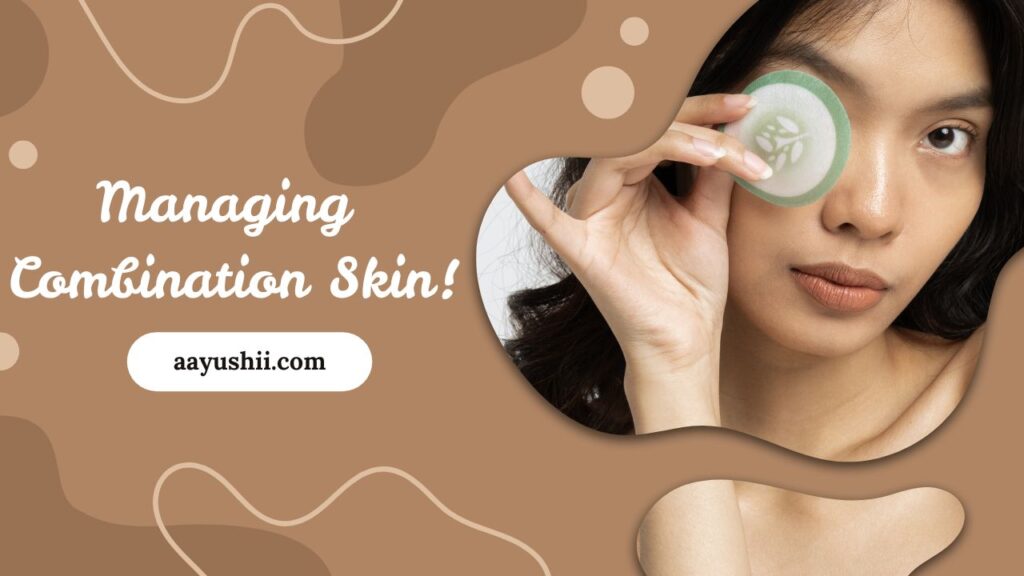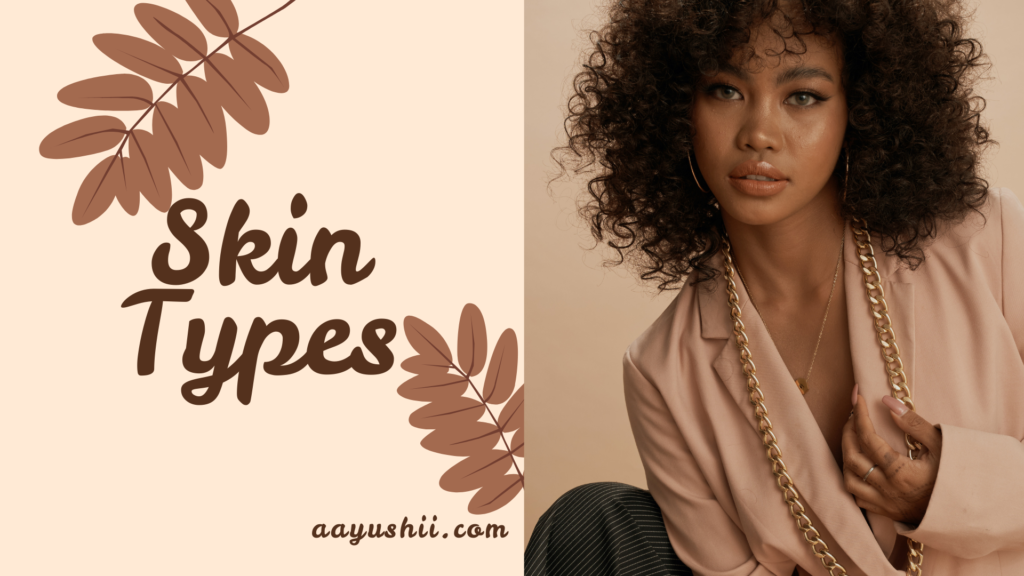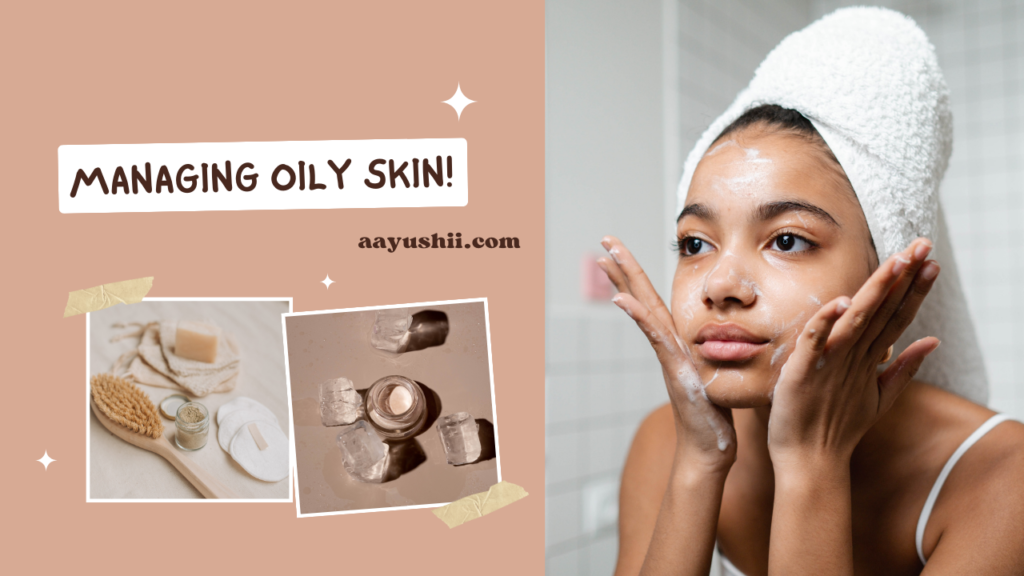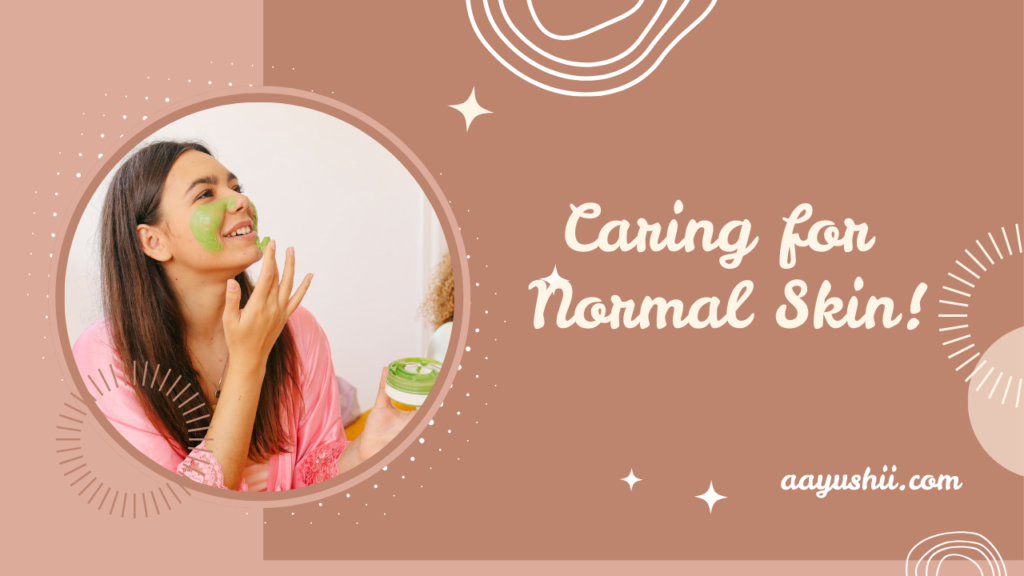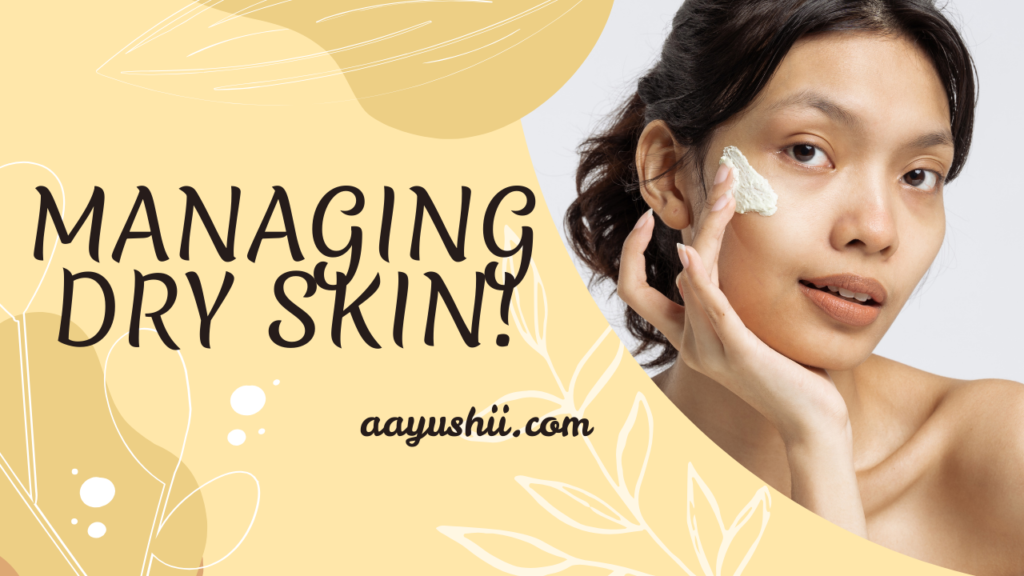Combination skin can feel like a balancing act—oil in some areas, dryness in others. The key to managing combination skin lies in understanding its unique characteristics and addressing the specific needs of each zone. While the T-zone (forehead, nose, and chin) tends to be oily, other parts like the cheeks or under-eye area may feel dry or sensitive. Luckily, with the right ingredients and tailored skincare routine, you can achieve a harmonious complexion that feels balanced, nourished, and free from shine or dryness. In this article, we will explore the root causes of combination skin, delve into the science behind it, and share highly effective, research-backed ingredients and products that offer targeted solutions.
What Causes Combination Skin?
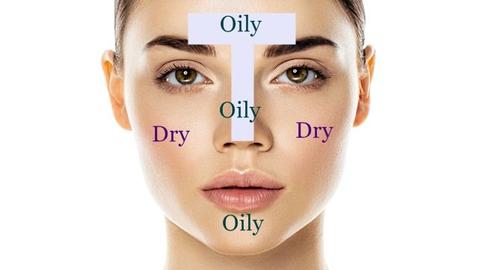
Combination skin and oily skin have virtually the same causes, with the key difference being that oily skin affects the entire face, while with combination skin, the oiliness is usually confined to the T-zone. Combination skin typically results from a mix of environmental factors, hormonal changes, genetic predisposition, and skincare habits. Let’s break down the primary causes of this complex skin type.
1. Genetics and Sebaceous Gland Activity
Combination skin is often inherited. The size and activity level of sebaceous glands are genetically determined, meaning certain areas of your face naturally produce more sebum (oil). The T-zone has larger sebaceous glands, while the cheeks or other areas may produce less. This difference results in some areas being oilier while others remain dry. If your parents had combination skin, there’s a good chance you’ll experience it too.
2. Hormonal Changes
Hormones play a major role in oil production, especially during puberty, menstruation, pregnancy, and menopause. Androgens (male hormones), present in both men and women, stimulate sebaceous glands to produce more oil, particularly in the T-zone. These fluctuations can make your skin feel oily in certain areas while leaving other areas prone to dryness or sensitivity.
3. Environmental Impact
External elements like weather, air pollution, and humidity can further exacerbate the imbalance in combination skin. For example, extreme temperatures or increased humidity can boost oil production, especially in the T-zone, while causing dryness on other parts of your face. Pollution can also clog pores, leading to breakouts and irritation, particularly where oil is overproduced.
4. Diet and Hydration
Your diet and hydration levels significantly influence your skin’s condition. A diet rich in refined sugars, dairy, and processed foods can cause inflammation and trigger an excess of oil production, while dehydration can worsen dry patches. Balancing your intake of antioxidants, healthy fats, and water is crucial for supporting skin balance.
5. Over-Treatment or Under-Treatment of Skin
Over-exfoliating or using harsh, stripping skincare products can dry out certain areas of the face, while neglecting oil control in other areas can worsen the greasy T-zone. The goal for combination skin is to strike the perfect balance, where no area is neglected or over-treated.
Key Ingredients and Products for Combination Skin

To address both oil and dryness, combination skin requires a precise approach with products that treat different zones without causing an imbalance. Here are scientifically backed ingredients that effectively manage combination skin:
1. AHA & BHA (Alpha Hydroxy Acid & Beta Hydroxy Acid)
AHAs (like glycolic acid) and BHAs (like salicylic acid) offer an ideal combination for treating combination skin. While AHAs are water-soluble and best for dry, flaky areas, BHAs are oil-soluble, penetrating deep into pores to break down oil and prevent acne. Using both allows for targeted treatment, helping to exfoliate dry patches and clear clogged pores in the oilier areas of the face.
How It Works:
AHAs hydrate and exfoliate dry skin, promoting an even texture. BHAs penetrate the pores, dissolve excess sebum, and prevent breakouts.
Recommended Products:
- Dual AHA/BHA exfoliating toners or serums
- Glycolic acid cleansers for dry areas and salicylic acid cleansers for the T-zone
2. Niacinamide (Vitamin B3)
Niacinamide is one of the most versatile and effective ingredients for combination skin. It helps control sebum production in oily areas while maintaining moisture balance in dry zones. Niacinamide strengthens the skin’s barrier, reduces pore size, and soothes inflammation, making it an essential component in combination skin care.
How It Works:
Niacinamide regulates oil production in the T-zone, while also keeping the skin’s moisture levels balanced, preventing both oiliness and dehydration.
Recommended Products:
- Niacinamide serums (5% concentration for optimal effect)
- Moisturizers with niacinamide to maintain hydration and control sebum
3. Hyaluronic Acid
A vital ingredient for any skin type, hyaluronic acid acts as a moisture magnet. It draws water into the skin without adding oil, making it ideal for maintaining hydration in the drier areas of your face. Hyaluronic acid ensures your skin stays plump and balanced without worsening oiliness in the T-zone.
How It Works:
Hyaluronic acid delivers lightweight hydration, keeping your skin moisturized while preventing excess oil production due to dehydration.
Recommended Products:
- Lightweight serums or moisturizers with hyaluronic acid
- Hydrating mist with hyaluronic acid for an instant moisture boost
4. Zinc
Zinc is a powerhouse ingredient for combination skin due to its anti-inflammatory and sebum-regulating properties. It helps reduce excess oil production, while simultaneously soothing irritated or dry skin. Zinc also accelerates healing and promotes a healthy, clear complexion, especially when acne is a concern.
How It Works:
Zinc regulates sebum production, reducing oiliness in the T-zone, while its soothing properties help calm dry, irritated areas of the skin.
Recommended Products:
- Zinc-based serums or moisturizers for oil control and calming inflammation
- Sunscreens with zinc oxide to protect without clogging pores
5. Clay (Kaolin & Bentonite)
Clay masks, particularly those formulated with kaolin or bentonite, are excellent for targeting oily areas while maintaining hydration in dry zones. Kaolin and bentonite clays absorb excess sebum from the T-zone, while their gentle exfoliation prevents clogged pores. They also leave the skin with a matte finish, which helps reduce shine without drying out other areas.
How It Works:
Clay absorbs oil and impurities, targeting the T-zone, while preventing over-drying or irritating other parts of your face.
Recommended Products:
- Clay masks with kaolin or bentonite for oily zones
- Clay-based cleansers for regular use to maintain a balanced complexion
6. Bamboo Charcoal and Green Tea Extract
Bamboo charcoal helps absorb excess oil and impurities from the skin’s surface, while green tea extract provides antioxidant protection and soothes inflammation. These ingredients are ideal for targeting the T-zone and reducing shine, while keeping the rest of your face balanced and protected.
How It Works:
Bamboo charcoal draws out excess oil, while green tea provides antioxidants that protect the skin from free radical damage, leaving the skin refreshed and balanced.
Recommended Products:
- Charcoal-based masks for deep cleansing the T-zone
- Green tea-infused moisturizers to calm dry areas
7. Retinoids (Retinol)
Retinoids, such as retinol, are exceptional for combination skin, especially if you deal with acne, pigmentation, or aging concerns. Retinoids encourage cell turnover, reducing the likelihood of clogged pores and promoting a clearer, more even complexion. They also help regulate oil production, addressing both dry and oily areas of the skin.
How It Works:
Retinoids help with the shedding of dead skin cells, preventing clogged pores and controlling sebum production, which balances the skin over time.
Recommended Products:
- Retinol serums (start slowly to build tolerance)
- Prescription retinoids for more severe skin concerns
Skincare Routine for Combination Skin
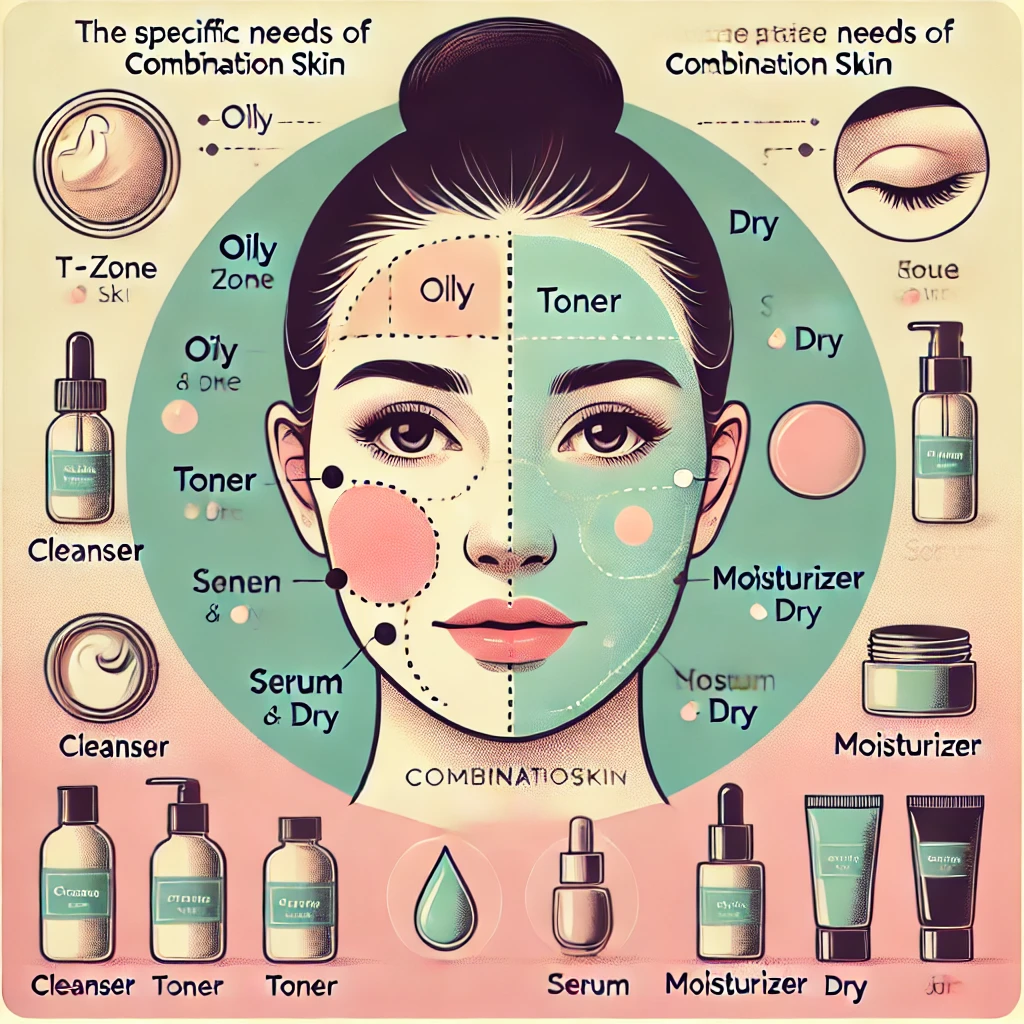
To balance the needs of both oily and dry areas, you need a well-rounded skincare routine that targets both without causing excess oil or dryness. Here’s an effective routine to help balance combination skin:
- Gentle Cleansing: Choose a gentle, sulfate-free cleanser with a balanced formula. Use a salicylic acid cleanser for the T-zone and a hydrating glycolic acid or gentle cream cleanser for drier areas.
- Toning: Apply a toner with niacinamide to regulate oil and enhance moisture retention without irritating dry areas.
- Exfoliation: Use a mild exfoliant containing AHA and BHA to smooth dry patches and prevent clogged pores in the oilier T-zone. Exfoliate 2-3 times a week to maintain skin balance.
- Serum: Apply a hyaluronic acid serum to lock in moisture without adding oil, and use niacinamide for regulating oil production and soothing the skin.
- Moisturizing: Use a lightweight, oil-free moisturizer with hyaluronic acid and niacinamide to hydrate and balance the skin without contributing to excess oil.
- Sun Protection: Opt for an oil-free, non-comedogenic sunscreen with zinc oxide that offers broad-spectrum protection without clogging pores.
Conclusion
Managing combination skin may seem challenging, but with the right approach, achieving a harmonious complexion is possible. By understanding the unique needs of both oily and dry zones, and using targeted ingredients like PHA, hyaluronic acid, zinc, and ceramides, you can create a skincare routine that addresses every aspect of combination skin. The key lies in balance—treating oiliness without exacerbating dryness and providing hydration without creating excess shine. Consistency and the right products will help you achieve a glowing, clear, and balanced complexion.
FAQ: Managing Combination Skin
1. What is combination skin?
Combination skin features a mix of skin types. Typically, the T-zone (forehead, nose, and chin) is oily, while the cheeks and other areas may be dry or normal.
2. How can I identify if I have combination skin?
You might have combination skin if you notice:
- Oily shine or breakouts in your T-zone.
- Dryness or tightness in the cheek area.
- Varying reactions to skincare products in different areas of your face.
3. What is the best way to manage combination skin?
- Use a gentle cleanser to avoid stripping the skin.
- Apply lightweight, non-comedogenic moisturizers that hydrate without clogging pores.
- Balance products: Use mattifying treatments in oily areas and richer creams on dry patches.
4. Can combination skin be treated with a single product?
While some products work well for overall use, combination skin often benefits from a customized approach. You may need separate products for oily and dry areas, such as a clay mask for the T-zone and a hydrating mask for the cheeks.
5. What ingredients should I look for in skincare products for combination skin?
- For hydration: Hyaluronic acid, glycerin, or ceramides.
- For oil control: Salicylic acid, niacinamide, or lightweight botanical oils.
- For exfoliation: AHAs (like glycolic acid) and BHAs (like salicylic acid).
6. How often should I exfoliate combination skin?
Exfoliate 1-2 times per week with gentle, non-abrasive exfoliants. Focus on areas prone to clogged pores (T-zone) and avoid over-drying sensitive areas.
7. Are natural remedies effective for combination skin?
Natural ingredients like aloe vera, green tea, and honey can help soothe and balance combination skin. However, ensure they are suitable for your specific needs and don’t cause irritation.
8. Do I need sunscreen for combination skin?
Yes! Use a broad-spectrum SPF 30+ sunscreen daily. Opt for lightweight, non-greasy formulas to prevent clogging pores while protecting against sun damage.
9. Can makeup worsen combination skin issues?
Heavy or comedogenic makeup can clog pores and exacerbate oily areas. Choose oil-free, non-comedogenic, or mineral-based makeup and always remove it thoroughly before bed.
10. What’s the ideal nighttime routine for combination skin?
- Cleanse with a gentle, hydrating cleanser.
- Use a toner to balance skin pH.
- Apply a serum suited to your primary concern (e.g., hydration, brightening).
- Spot treat oily or breakout-prone areas if needed.
- Use a lightweight moisturizer to lock in hydration.

